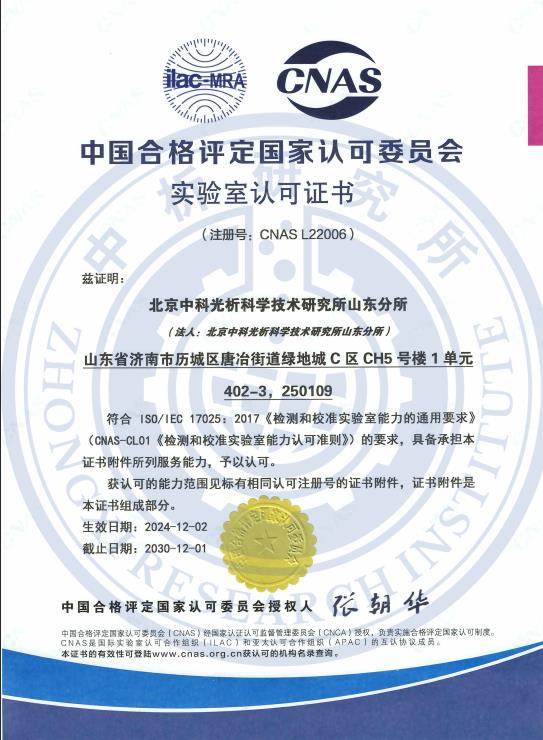铝、铁检测
1对1客服专属服务,免费制定检测方案,15分钟极速响应
发布时间:2025-07-19 00:11:38 更新时间:2025-07-18 00:11:39
点击:0
作者:中科光析科学技术研究所检测中心
1对1客服专属服务,免费制定检测方案,15分钟极速响应
发布时间:2025-07-19 00:11:38 更新时间:2025-07-18 00:11:39
点击:0
作者:中科光析科学技术研究所检测中心
Aluminum and iron are among the most widely used metals in modern industries, playing critical roles in sectors ranging from aerospace and automotive manufacturing to construction and consumer goods. Aluminum, known for its lightweight properties, corrosion resistance, and excellent conductivity, is essential in applications such as aircraft components, packaging materials, and electronics. Iron, particularly in its alloyed forms like steel, is fundamental to infrastructure, machinery, and tools due to its strength, durability, and cost-effectiveness. The accurate detection of these metals is paramount for ensuring product quality, safety compliance, and environmental sustainability. Defective or impure materials can lead to catastrophic failures, such as structural collapses in buildings or malfunctions in critical equipment. Therefore, comprehensive detection processes are integral to quality control, supply chain management, and regulatory adherence. These processes involve identifying elemental compositions, mechanical properties, and potential contaminants to meet industry-specific requirements. Detection is performed across various stages, including raw material inspection, production monitoring, and final product verification, often guided by international standards to facilitate global trade and innovation. This article delves into the key aspects of aluminum and iron detection, focusing on detection projects, instruments, methods, and standards to provide a holistic view of this vital field.
Detection projects for aluminum and iron encompass a wide array of tests to evaluate their properties and ensure suitability for specific applications. These projects are categorized based on the metal type and the parameters being assessed. For aluminum, common projects include compositional analysis to measure the percentage of aluminum and key alloying elements like silicon, copper, and magnesium; mechanical testing such as tensile strength, hardness (e.g., using Rockwell or Brinell scales), and ductility; corrosion resistance evaluations through salt spray or electrochemical methods; and surface quality inspections for defects like cracks, porosity, or inclusions. For iron, especially in iron-based alloys like steel, projects often focus on carbon content determination, which affects hardness and weldability; impurity detection for elements such as sulfur and phosphorus that can cause brittleness; mechanical performance assessments like impact testing and fatigue analysis; and non-destructive evaluation for internal flaws. Additional projects cover physical properties (e.g., density, thermal conductivity) and microstructural analysis to study grain size and phase distribution. These projects are tailored to industry needs—e.g., aerospace requires high-precision compositional control, while construction emphasizes mechanical integrity—ensuring that both metals meet stringent performance criteria.
A variety of advanced instruments are employed for aluminum and iron detection, leveraging technology to achieve high accuracy and efficiency. Key instruments include spectrometers, such as X-ray Fluorescence (XRF) spectrometers and Optical Emission Spectrometers (OES), which provide rapid elemental composition analysis for both metals. For instance, OES is ideal for on-site iron testing in foundries, while XRF excels in non-destructive aluminum alloy verification. Mechanical testing instruments include universal testing machines for tensile and compressive strength measurements, and hardness testers like Vickers or Rockwell devices to assess surface durability. Microscopes, such as optical and scanning electron microscopes (SEM), are used for microstructural examination, revealing grain boundaries and defects in aluminum or iron samples. Corrosion testing instruments, like salt spray chambers, simulate environmental conditions to evaluate degradation resistance. Additionally, instruments like Atomic Absorption Spectrometers (AAS) and Inductively Coupled Plasma (ICP) systems offer precise quantification of trace elements. Portable devices, such as handheld XRF analyzers, enable field inspections for quality control. These instruments are selected based on project requirements, balancing factors like sensitivity, speed, and cost to ensure reliable results across different detection scenarios.
Detection methods for aluminum and iron involve systematic procedures to analyze properties, combining chemical, physical, and instrumental techniques. Chemical methods include wet chemical analysis, where reagents like titrants are used in titration to measure aluminum content or iron impurities; combustion analysis for carbon and sulfur determination in iron alloys; and acid dissolution followed by spectroscopic techniques. Instrumental methods dominate modern detection, such as spectrometry-based approaches (e.g., using XRF or ICP-OES for elemental mapping) and electrochemical methods like potentiometry for corrosion studies. Physical methods encompass mechanical testing procedures, such as tensile tests where samples are pulled to failure to assess strength, and hardness indentation measurements. Non-destructive testing (NDT) methods are crucial for both metals: ultrasonic testing detects internal flaws in iron structures, eddy current testing identifies surface cracks in aluminum components, and magnetic particle inspection is specific to ferromagnetic iron alloys. Metallographic methods involve preparing and examining polished samples under microscopes to study microstructures. These methods are applied sequentially or in combination, with protocols emphasizing repeatability, minimal sample preparation, and safety to yield comprehensive data on metal integrity.
Detection standards provide the framework for consistent and reliable aluminum and iron testing, ensuring global interoperability and compliance with regulatory requirements. Widely recognized standards include those from international bodies like ASTM International, ISO, and national organizations such as GB in China. For aluminum detection, ASTM B557 covers tensile testing of wrought products, ASTM E34 outlines chemical analysis methods, and ISO 2107 specifies sampling procedures for aluminum alloys. Iron detection standards include ASTM A370 for mechanical testing of steel products, ISO 6892 for tensile tests at ambient temperatures, and GB/T 223 series in China for chemical analysis of iron, steel, and alloys. Additional standards address corrosion testing (e.g., ISO 9227 for salt spray tests) and non-destructive evaluation (e.g., ASTM E1444 for magnetic particle inspection). Industry-specific standards also apply, such as ASME for pressure vessels or EN standards for European markets. Adherence to these standards is mandatory for certification, facilitating trade and innovation by providing benchmarks for accuracy, precision, and reporting formats. Updates to standards, driven by technological advancements, ensure that detection practices remain robust and relevant.

证书编号:241520345370

证书编号:CNAS L22006

证书编号:ISO9001-2024001















版权所有:北京中科光析科学技术研究所京ICP备15067471号-33免责声明